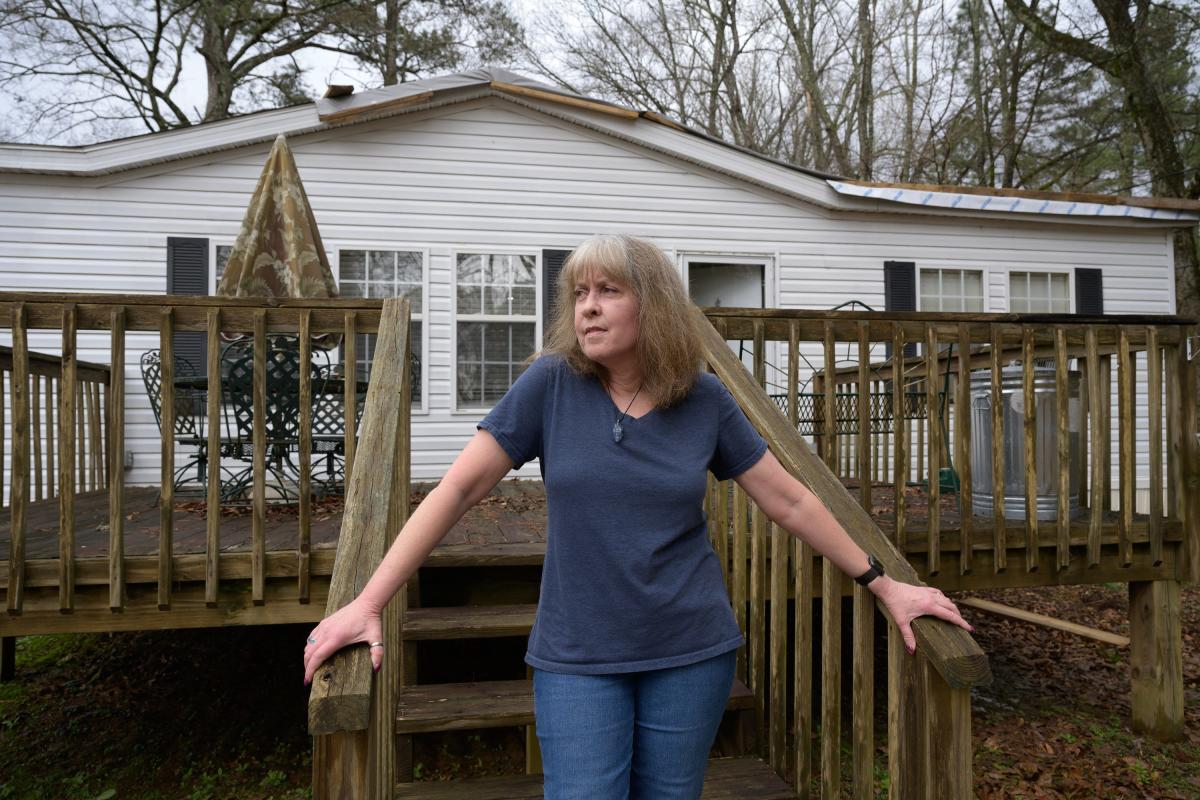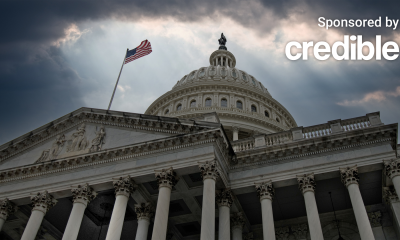Personal Finance
‘Things just kept getting more expensive and worse’: Credit card debt is surging but fewer Americans can pay it off

After Kathleen Immel Cross and her husband paid off more than $21,000 in credit card debt they had accumulated in 2018, she made a promise to herself.
The couple, with a household income of around $72,000, would stay out of debt so they could retire without the burden of owing so much money.
To make good on her resolution, she canceled many of the credit cards that led to their overspending; she vowed to use the remaining ones for small purchases and to maintain a credit record; and she adopted a “cash and carry” lifestyle, she said, in which she and her husband would only buy what they could afford with the money in their wallets. The strategy worked.
Then the doctors’ bills arrived.
Immel Cross, 55, had three surgeries in the middle of 2021. Because she didn’t have cash to cover them, she put $600 on one of her credit cards, she told USA TODAY.
Considering the enormous debt she had recently paid off, the amount felt small. She’d pay it off in no time, thought Immel Cross, who earns $17 an hour working at a convenience store near Birmingham, Alabama.
Credit card debt hits record:Inflation leaves consumers financially stressed
‘Barely making it work’:America’s aching economy is forcing tough choices.
But she and her husband couldn’t catch a break. Inflation had been low when they had finished paying off their earlier debt. But as the economy recovered from the pandemic, prices began to build up.
Their electric bill rose. Then gas and groceries went up. “Things just kept getting more expensive and worse,” she said.
The $600 quickly became $3,200, her current balance that is poised to keep growing. “We have started having to charge necessities back on the credit card,” she said.
Inflation, which has now been at historically high levels for almost two years, is eroding the value of Americans’ paychecks, leaving millions of Americans like Immel Cross and her husband in debt trying to close the gap between what they once could afford and what they struggle to pay now.
To make up that difference, they are leaning on credit cards and increasingly falling behind on payments. Credit card debt hit a record of nearly $1 trillion last quarter, a $394 billion increase from the prior three months, according to data from the Federal Reserve Bank of New York.
Despite a low unemployment rate in the U.S., “stubbornly high prices and climbing interest rates may be testing some borrowers’ ability to repay their debts,” Wilbert van der Klaauw, economic research advisor at the New York Fed, said in a statement.
How did credit card debt get so high?
During the pandemic, millions of Americans paid off credit card debt with stimulus money they received. At the same time, they avoided accumulating more debt because lockdowns and restrictions prevented them from spending money on things like vacations.
That led to a drastic decline in balances. From the last quarter of 2019 to the first quarter of 2021, credit card debt declined from $930 billion to $770 billion, a 17% decrease.
Along with lowering their overall credit card debt, Americans also got better at paying their full monthly bill on time during the crisis.
Two years into the pandemic, the percentage of U.S. credit card balances that were seriously delinquent — or more than 90 days late — fell to 3% compared to 5% before COVID-19.
Now that percentage is starting to creep up again and stands at more than 4%.
Seriously delinquent payments can substantially lower a person’s credit score because credit card companies are required to report missed payments to credit bureaus. Typically, the lower your score is, the harder and more expensive it becomes to get access to new lines of credit, like a mortgage or another credit card.
Currently, serious delinquencies are highest for Americans ages 18 to 29 at 7.6%. That’s followed by 30 to 39-year-olds at 5.7%.
New York Fed researchers said it’s “particularly concerning” that younger borrowers have the highest rates of credit card delinquencies. That’s because they’re more likely to have student loan debt in addition to mortgage obligations.
The pause on student loan payments, which has been in effect for nearly three years as part of emergency pandemic relief measures, is set to be lifted in two months. That will add to many Americans’ debt obligations and potentially drive those delinquency rates even higher, the researchers said in a blog post.
How to prepare to repay student loans: Regardless of SCOTUS decision, 25 million people will have to repay student debt
Affording a college degree: As the Supreme Court debates student loans, some families go to extremes to afford college tuition
Increases in credit card debt historically weigh more on low- and middle-income households who are more likely to carry a balance from month to month, according to Federal Reserve data. And while Black and Hispanic families are less likely to own a credit card than white and Asian households, they are much more likely to carry a balance and are denied other forms of credit across all income levels more often, according to the Fed. .
Credit scores improved
Because Americans were paying off debts and making more on-time payments to lenders, credit scores improved during the pandemic. The average FICO credit score rose from 703 to 714, according to Experian data.
Keishanda Dunlap’s score began to rise when she received enhanced unemployment benefits during the health crisis.
Dunlap, 35, who was working as a licensed life insurance policy salesperson before the pandemic, wasn’t able to travel to meet clients and saw a massive drop in her income and was eventually laid off in 2020. But the enhanced unemployment benefits, which gave recipients an extra $600 a week, helped her stay afloat.
While unemployed she decided she wanted to boost her credit score of 620, which the industry considers “fair,” in order to increase her lines of credit.
She used various strategies that allowed her to improve her credit score by 60 points. As a result, her line of credit rose from $500 to $10,000.
But eventually, her debt ballooned to $10,000 partly as a result of redesigning her living room and traveling to visit her cousin in Hawaii, which she said helped her cope with the COVID-induced depression she experienced.
Dunlap, who lives in Los Angeles and says she is now ready to return to work, currently pays more than the minimum required monthly payment but is adding to her debt because she needs to purchase gas and groceries.
She thinks it will take around six months to pay off her debt. Based on her prior experience, selling life insurance policies can be quite lucrative, she said. The sale of a typical policy could earn her upwards of $1,200.
Currently, she has no savings after exhausting the $4,000 she accumulated during the pandemic. Anything she earns once she returns to work will go toward paying her bills and credit card debt.
Dunlap’s depleted savings mirrors what many Americans are experiencing. In April 2020, they were saving one-third of their disposable income, according to the U.S. Bureau of Economic Analysis. As of January, their personal savings rate hovered just below 5%.
Average credit card interest rate is climbing
Credit card rates have risen since the Federal Reserve began its campaign to fight high inflation by raising its key interest rate. When the Fed raises rates, it becomes more expensive for banks to borrow money from one another. They pass on the added expense to consumers by raising the interest rates they charge on mortgages, loans and credit cards.
When will rate hikes stop?: Fed will hike interest rates higher if strong job growth, inflation continue, Fed governor says
What Fed rate hikes mean for you: Mortgage rates, credit cards, auto loans and more
Getting a better interest rate: Tips for how for to lower your credit card interest rate
At the start of the pandemic, average credit card rates hovered around 16%. Currently, they’re above 20%, according to Creditcards.com data.
That in itself is making it harder for credit card users to make timely payments since it makes it more expensive.
The interest charged on outstanding balances will only continue to go up until the Fed stops hiking or cuts interest rates. That’s not likely to happen soon since inflation is at more than three times the Fed’s 2% target level and job openings remain plentiful.
To lower the interest she’s accruing on her outstanding debt, Immel Cross of Alabama, said she’s making double her monthly minimum payment.
That said, she feels a mounting level of financial stress.
“We’re getting one message out of the White House that things have never been better. But this is not what I’m seeing now,” said Immel Cross, who volunteers at a foodbank twice a month and said lines are going around the block lately.
“Obviously they’re not in great financial shape either.”
Elisabeth Buchwald is a personal finance and markets correspondent for USA TODAY. You can follow her on Twitter @BuchElisabeth and sign up for our Daily Money newsletter here
This article originally appeared on USA TODAY: Credit card debt is rising as Americans cope with high inflation
Read the full article here

-

 Side Hustles6 days ago
Side Hustles6 days agoWhy the Best CEOs Think Like Anthropologists
-

 Side Hustles4 days ago
Side Hustles4 days agoThis User-Friendly H&R Block Software Package is Only $40, While Supplies Last
-

 Investing4 days ago
Investing4 days agoTikTok faces US ban deadline as users brace for fallout By Reuters
-

 Personal Finance5 days ago
Personal Finance5 days agoDecember inflation clouds Fed's outlook on interest rate cuts
-

 Passive Income3 days ago
Passive Income3 days agoTrain for a New Tech Career in 2025 With This $25 Course Bundle
-

 Personal Finance6 days ago
Personal Finance6 days agoCalifornia's homeowners insurance industry faces rough road ahead as wildfires continue
-

 Investing6 days ago
Investing6 days agoWhy Not Owning Bitcoin is Making You Poor
-

 Make Money6 days ago
Make Money6 days agoDon’t Settle: 5 Game-Changing Moves to Maximize Your Financial Advisor’s Impact


















